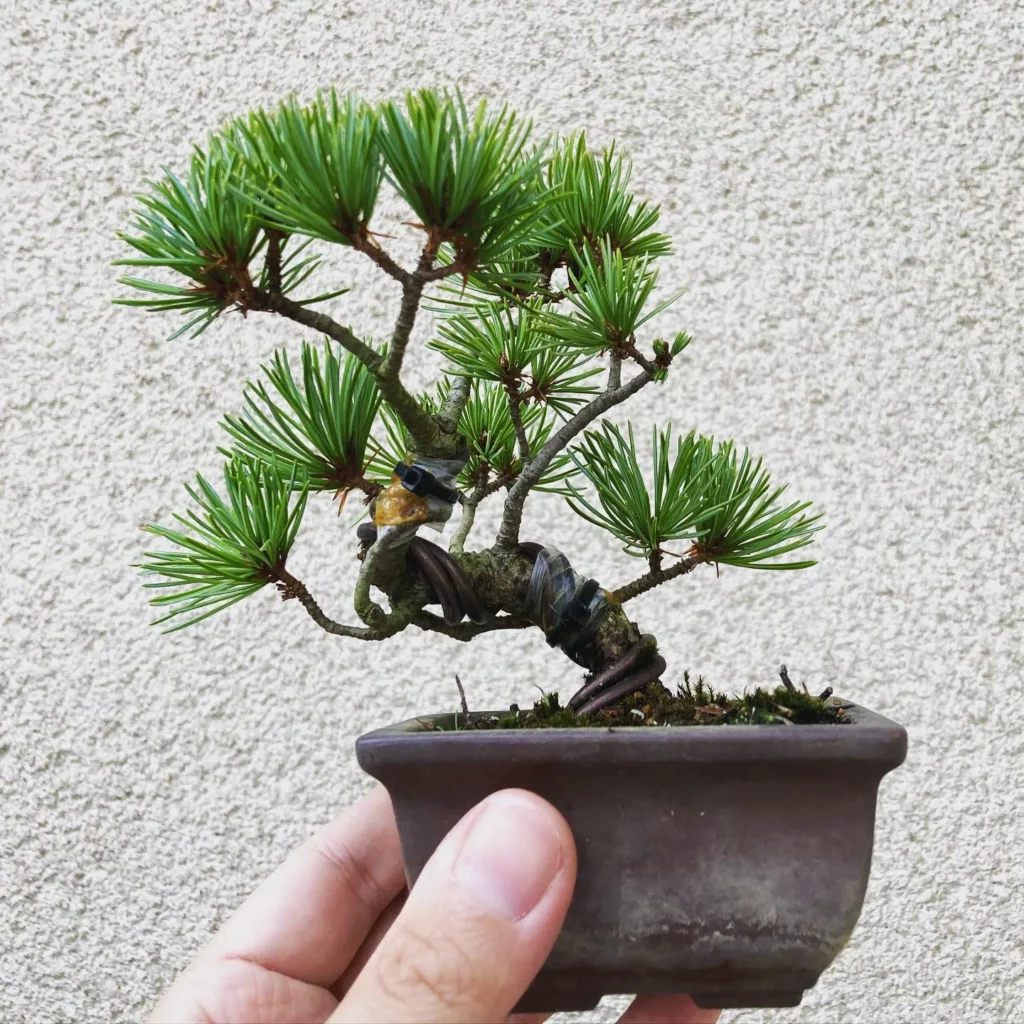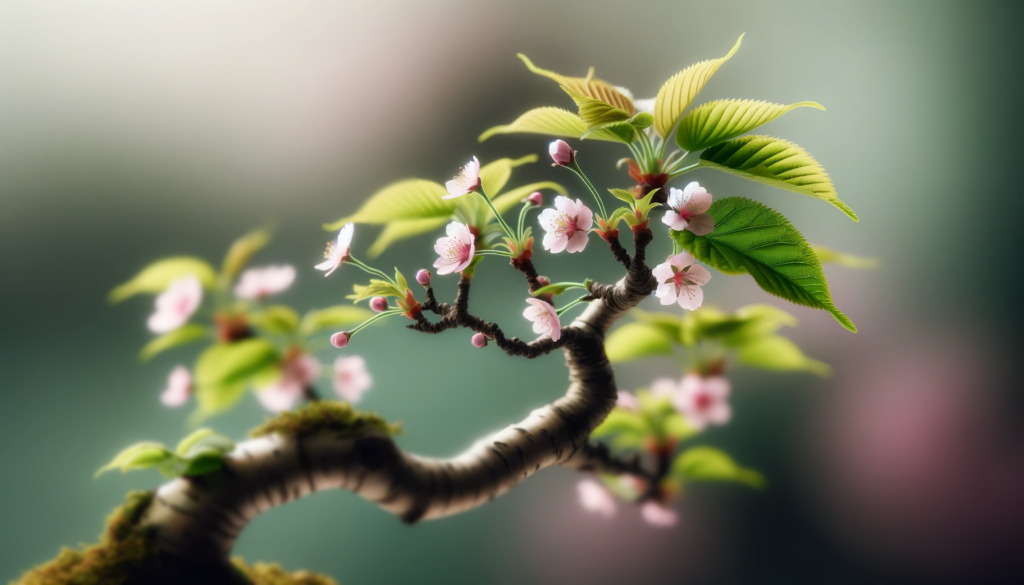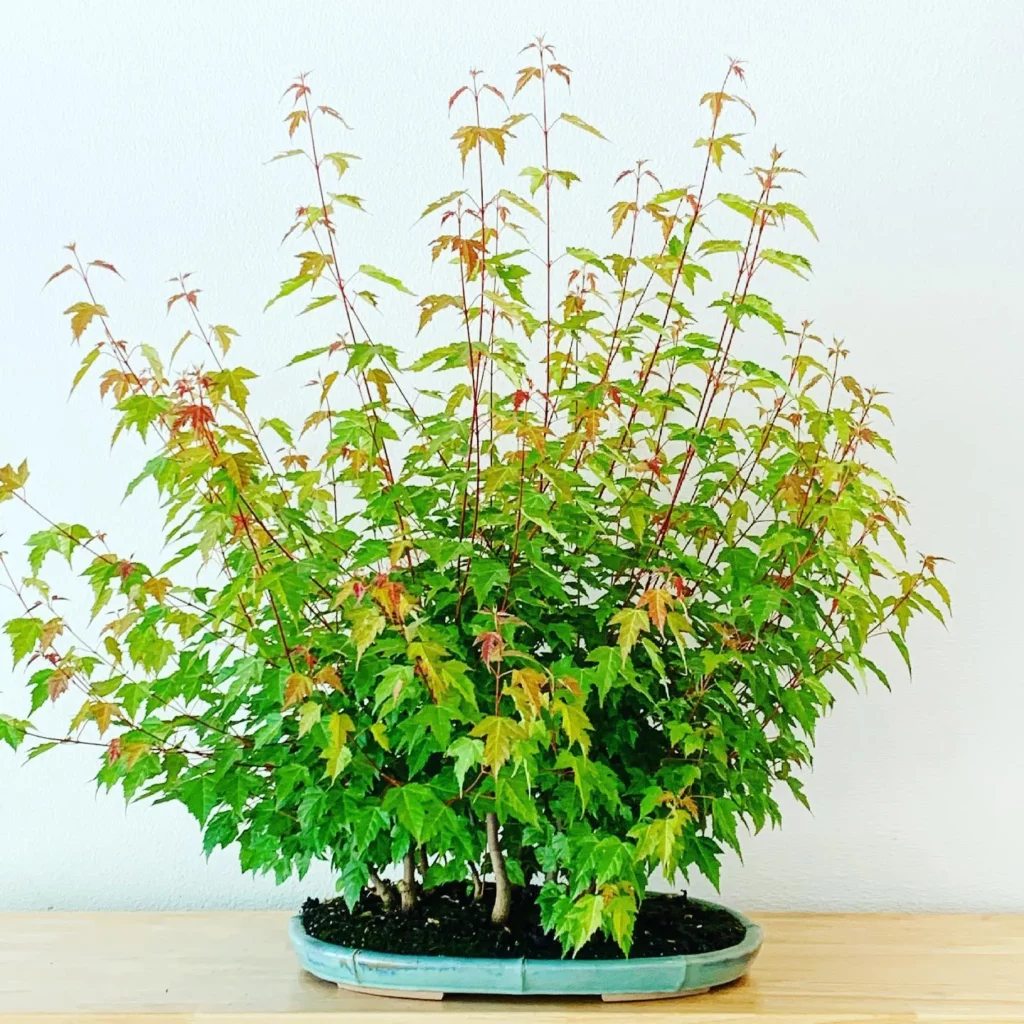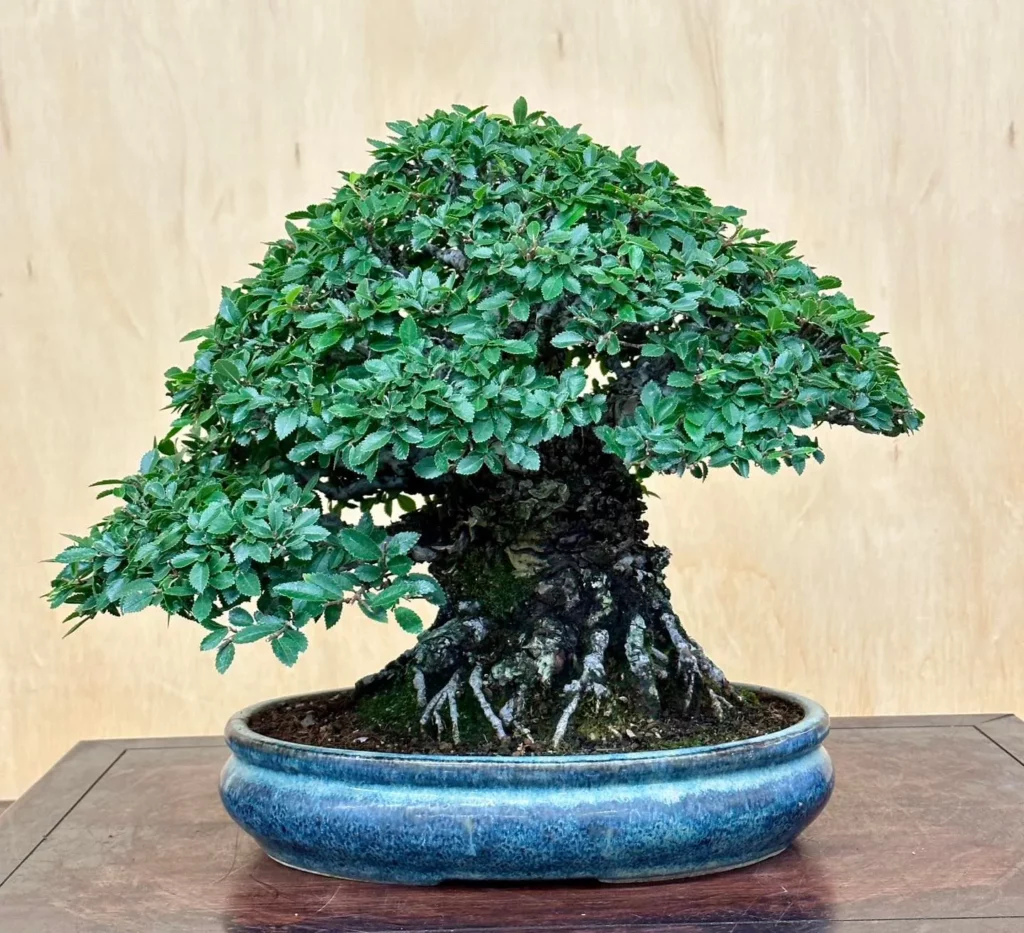Welcome to our article on European Larch Bonsai care and styling. If you’re a bonsai enthusiast looking to add a unique and beautiful tree to your collection, the European Larch (Larix decidua) is an excellent choice. In this guide, we’ll explore everything you need to know about caring for and styling this popular bonsai species.
Appearance of European Larch Bonsai



European Larch Bonsai, also known as Larix decidua, has a narrow habit with a flattened crown and gracefully drooping branches. The leaves are 1-3 cm long, flat, soft, and pale green, turning to golden yellow in autumn. The bark is grayish and forms cracks and ridges in older specimens. The larch produces small cones, known as “larch roses,” that are highly decorative. These cones are initially pink, white, and green, but turn brown after pollination. The tree has a vigorous growth habit and thickens its trunk and branches easily.
Light Requirements for European Larch Bonsai



European Larch Bonsai thrives in full sun, but it can also withstand semi-shade during hot summer weeks. Proper lighting is crucial to ensure that the tree does not get scorched in intense summer sunlight, which can result from a lack of moisture at the roots. To protect the tree from excessive heat, it is advisable to provide some light shade, especially in extremely hot areas. Additionally, it’s worth noting that the more foliage the larch bonsai has, the more heat-tolerant it becomes.
Watering of European Larch Bonsai



Proper watering is essential for the health and vitality of your European Larch Bonsai. It’s important to ensure that the soil never becomes completely dry but also avoid overwatering, as this can lead to root rot. Follow these guidelines to water your European Larch Bonsai effectively:
- Thorough watering: Water your bonsai thoroughly when the soil becomes dry. This will help to ensure that the entire root system is adequately hydrated.
- Moisture for the Golden Larch: The Pseudolarix, also known as the Golden Larch, has a higher water requirement than other larch species. It should be kept moist at all times to prevent the rootball from drying out.
- Summer moisture: During hot summer days, you can place the pot of your Golden Larch Bonsai in a shallow water bowl. This will provide extra moisture and prevent the soil from drying out too quickly.
- Water quality: Both Larix and Pseudolarix bonsai don’t tolerate very calcareous water. Thus, it’s best to use water with lower mineral content for watering your European Larch Bonsai.
Fertilizing European Larch Bonsai



Proper fertilizing is essential for the healthy growth and development of your European Larch Bonsai. Here are some key points to keep in mind:
- Timing: Start fertilizing after the buds have opened in spring. This is when the tree is actively growing and in need of nutrients to support new shoot development.
- Nitrogen Product: Use a high nitrogen product initially to stimulate vigorous growth. This will help the tree establish strong branches and foliage.
- Product Transition: Once the initial growth phase is complete, switch to a balanced fertilizer. This will provide a mix of nutrients to support overall plant health.
- Fertilizer Application: You have two options when it comes to applying fertilizer. You can choose to use liquid fertilizer on a weekly basis or opt for solid organic fertilizer applied monthly. Choose the method that works best for you and your bonsai.
- Mid-Summer Semi-Dormancy: As mid-summer approaches, the European Larch enters a semi-dormant period. During this time, reduce the frequency of fertilizer applications but continue to feed the tree well to maintain its health.
- Preparing for Winter: From late summer onwards, switch to a low-nitrogen feed. This will help the tree strengthen itself in preparation for the coming winter season.
Potting European Larch Bonsai



European Larch Bonsai requires regular repotting to ensure its optimal growth and health. Younger specimens should be repotted every two years, while older trees can be repotted every three to five years. It is crucial to choose the right time for repotting, either in late spring before the buds open or in autumn.
When repotting European Larch Bonsai, it is essential to avoid removing more than one third of the root mass. This helps prevent stress and allows the tree to recover quickly. Use a pH-neutral or slightly acidic standard soil mix specifically designed for bonsai. This ensures that the roots have proper drainage and can absorb nutrients effectively.
Propagation of European Larch Bonsai



European Larch Bonsai can be propagated using different methods, including seed sowing, semi-hardwood cuttings, and air-layering. Here’s a brief overview of each propagation method:
Seed Sowing:
To propagate European Larch Bonsai from seeds, it is best to sow them in early spring. Start by filling a seed tray or small pots with a well-draining bonsai soil mix. Place the seeds on the surface of the soil and lightly cover them with a thin layer of soil. Keep the soil consistently moist but not waterlogged. Germination can take several weeks, so be patient. Once the seedlings develop strong roots and a few sets of true leaves, they can be gently transplanted into individual pots.
Semi-Hardwood Cuttings:
Propagation of European Larch Bonsai through semi-hardwood cuttings is best done during summer when the new growth has partially hardened. Select healthy branches and cut them into 4-6 inch lengths. Remove the lower leaves and dip the cut ends in rooting hormone powder. Place the cuttings in a container filled with a well-draining rooting medium, such as a mixture of perlite and peat moss. Keep the soil moist and provide intermittent misting to increase humidity. After a few weeks, the cuttings should develop roots. Once the roots are well-established, they can be potted individually into bonsai containers.
Air-Layering:
Air-layering is another propagation technique that can be used for European Larch Bonsai. It is typically performed in late spring when the tree is actively growing. Select a healthy branch and make a horizontal cut halfway through the branch, approximately 1/3 of the way from the tip. Apply rooting hormone to the wounded area and wrap it with moist sphagnum moss. Cover the moss with a plastic wrap or bag to create a humid environment. Check the moss regularly to ensure it remains moist. After a few months, roots should develop. Once the roots are robust enough, the air-layered section can be removed from the parent plant and potted as a new bonsai tree.
Growth and Development of European Larch Bonsai
European Larch Bonsai, with its fast growth and vigorous nature, has the ability to thicken its trunk and branches easily, making it a desirable species for bonsai enthusiasts. In its early years, the larch showcases a narrow habit, but as it matures, its crown becomes broader and more flattened, adding to its aesthetic appeal.
One of the distinguishing characteristics of European Larch Bonsai is the graceful drooping of its branches. While other larch species, such as the Japanese Larch, tend to have more horizontally spreading branches, the European Larch takes on a unique and elegant form.
In spring, the larch bursts with new foliage, which emerges as bright green clusters resembling shaving brushes. This vibrant display adds a touch of freshness to the bonsai’s overall appearance.
As autumn approaches, the leaves of the European Larch turn a beautiful golden yellow, creating a stunning contrast against its bark and adding depth to its seasonal beauty.
- Fast-growing species with a vigorous growth habit
- Develops a broader, flattened crown as it matures
- Graceful drooping branches
- New foliage in spring resembles bright green shaving brushes
- Leaves turn golden yellow in autumn
Pests and Diseases of European Larch Bonsai
European Larch Bonsai, like any other plant, is vulnerable to various pests and diseases. It is important to be vigilant and take appropriate measures to prevent and control these issues to ensure the health and vitality of your bonsai tree.
Pests
The following pests can pose a threat to your European Larch Bonsai:
- Mealy bugs
- Black aphids
- Caterpillars
- Bark beetle larvae
- Gall midges
- Sawfly
These pests can cause damage to the foliage, stems, and overall health of the tree. Regular inspection of your bonsai is crucial to detect any signs of infestation early.
Diseases
Fungal diseases can also affect European Larch Bonsai. The following are common fungal diseases that may occur:
- Grey mold rot
- Needle cast
These diseases can cause discoloration, wilting, and decay of the leaves and branches. Proper care and maintenance can help prevent the onset and spread of these fungal infections.
To effectively control pests and diseases, it is important to use specific pesticides and treatments suitable for European Larch Bonsai. Always follow the instructions provided by the manufacturer and apply the treatments as recommended.
Additionally, creating optimal living conditions for your bonsai tree can help prevent infestations. Proper airflow, appropriate moisture levels, and maintaining a clean and healthy environment can contribute to the resilience of your European Larch Bonsai.
Styling European Larch Bonsai
When it comes to styling your European Larch Bonsai, the possibilities are endless. This versatile bonsai species is suitable for all styles, except for the broom style, and can be created in various sizes.
Two important techniques for styling your larch bonsai are pruning and wiring. Pruning should be done during the autumn to late winter months to shape the tree and maintain its overall structure. Due to their vigorous growth habit, larches may require multiple prunings throughout the year to manage their excessive strength.
Wiring is another crucial method used in styling European Larch Bonsai. It can be done in the spring when the leaf buds are ready to sprout. However, it’s important to monitor the wired branches closely, as larches have a tendency to thicken quickly. To avoid wire damage, be sure to remove it before it cuts into the bark.
FAQ
How often should I water my European Larch Bonsai?
You should water your European Larch Bonsai thoroughly when the soil becomes dry. The Pseudolarix, or Golden Larch, requires a lot of water and should be kept moist at all times to prevent the rootball from drying out.
When should I start fertilizing my European Larch Bonsai?
Fertilizing should begin after the buds have opened in spring. You can use a high nitrogen product initially to help the new shoots develop vigorously, and later switch to a balanced product. Liquid fertilizer can be applied weekly, or solid organic fertilizer can be applied monthly.
How often should I repot my European Larch Bonsai?
Younger larches should be repotted every two years, while older specimens may only need to be repotted every three to five years. Repotting can be done in late spring before the buds open or in autumn. It is important to not remove more than one third of the root mass.
How can I propagate my European Larch Bonsai?
European Larch Bonsai can be propagated from seed, semi-hardwood cuttings, or air-layering. Sowing seed should be done in early spring, while cuttings can be taken in summer (semi-ripe) or winter (hard-wood). Air-layering can be done in late spring.
What are the light requirements for European Larch Bonsai?
European Larch Bonsai prefers full sun but can tolerate semi-shade during hot summer weeks. It is important to ensure that the tree does not scorch in full summer sun, as this can be caused by a lack of moisture at the roots. Providing some light shade in extremely hot areas can help protect the tree.
What are the common pests and diseases that can affect European Larch Bonsai?
Common pests that can affect European Larch Bonsai include mealy bugs, black aphids, caterpillars, and bark beetle larvae. Fungal diseases like gray mold rot and needle cast can also be a concern. It is important to use specific pesticides to control these pests and diseases.
How should I style my European Larch Bonsai?
European Larch Bonsai is suitable for all bonsai styles except broom and can be styled in all sizes. Pruning and wiring are important techniques for styling larch bonsai. Pruning should be done in autumn to late winter to shape the tree and maintain its structure.
How does the European Larch Bonsai grow and develop?
European Larch Bonsai is a fast-growing species with a vigorous growth habit. It can thicken its trunk and branches easily if handled correctly. The larch has a narrow habit in its early years but becomes broader with a flattened crown as it matures. The branches of European Larch Bonsai gracefully droop.
What is the appearance of European Larch Bonsai?
European Larch Bonsai has a narrow habit with a flattened crown and gracefully drooping branches. The leaves are 1-3 cm long, flat, soft, and pale green, turning to golden yellow in autumn. The bark is grayish and forms cracks and ridges in older specimens. The larch produces small cones known as “larch roses” that are highly decorative.
How should I pot my European Larch Bonsai?
A pH-neutral or slightly acidic standard soil mix should be used for potting European Larch Bonsai. Repotting should be done every two years for younger larches and every three to five years for older specimens. It is important to not remove more than one third of the root mass.





